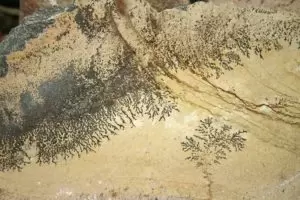
Paleoethnobotanists study the relationships between people in the past and plant life.
What Does a Paleoethnobotanist Do?
Paleoethnobotany, or archeobotany as the role is sometimes known, is the academic study of how humans in the past related to and used plants and plant-based material. They are qualified as archeologists or anthropologists and look at practical plant use such as which plants were harvested for what purposes. and may also attempt to examine the ethnological importance of plants in the archeological record. Humans did not simply use plants for practical purposes (food, building material, fodder, weapons, medicine) but also held some plant life as culturally or religiously important.
Paleoethnobotany is vital to any site where there is extant botanical remains. These will often survive with other evidence such as stone tool remains, ceramics, animal bones and other organic material such as phytoliths. They will look at residues on and in these materials and come to understand the importance to the society. One example of this is the use of red ochre on stone tools - something practiced by some technologically primitive societies today that is commonly seen in evidence from the past. There is no practical reason to do so, so the paleoethnobotanist needs to attempt to understand the spiritual or artistic meaning for doing so.
A paleoethnobotanist or archeobotanist will also look at ecological evidence to understand what plants the ancient society may have used. Absence in the archaeological record is not evidence that they did not use these materials, as some plant remains do not survive well under most conditions. Pollen and spores survive in anaerobic conditions but do not survive well elsewhere. Therefore, their job requires knowledge of ecology and botany to complement their archaeological knowledge.
Where Does a Paleoethnobotanist Work?
As they are a niche type of archeologist or anthropologist, you will find them in much the same workplaces as those career types. According to 2015 statistics, the majority of individuals in this type of job role worked in research and development in the social sciences (28%). These can include museum research programs, academic facing rather than public facing, and research in educational establishments. It will also include marketing; archeological information is useful for ethnic group identity in selling products and services.
23% work in scientific and technical consulting. In some states and under Federal law (and in many countries around the world), developers are obliged to carry out an archeological investigation. Some national bodies have the power to halt construction temporarily or permanently should the findings be culturally significant. This has led to a large number of independent archeological consultancies to cope with demand for commercial application.
19% work for Federal government. These will include educational roles (schools, colleges, universities and museums, including public education bodies). 8% work for State government, but not in education roles. Both these groups will include state and national parks where this is identified (or potential) archeological remains.
7% work for engineering services and will typically be onsite to monitor for archeological indicators on building work during construction.
What Is the Average Paleoethnobotanist's Salary?
The median salary in 2015 for all archeologists and anthropologists was recorded at $61,220. The ful range was $35,440 (lowest 10%) to $97,040 (highest 10%). The highest average paying sector was Federal government at $74,860, considerably more than the industry median. Engineering services paid around the median at $61,070. Management scientific and technical services paid just below the median at $58,510. State and local government paid slightly less at $56,650. Despite employing the largest number of people, R&D in social sciences paid the lowest median salary at $54,390.
What Is the Job Demand for Paleoethnobotanists?
Archeology is often seen as a non-vital job. The second problem is that it is often tied to construction - this is where most of the employment availability is. Job demand for archeologists is expected to grow 4% in the decade between 2014 and 2024. This is about half the national average of all jobs. As new technologies develop and archeology organizations (including government) start to favor technology over intrusive, expensive and time-consuming excavation, the number of available jobs is reduced. A great many roles will also depend on research funding; when education budgets are cut, excavation and archeological research is likely to suffer.
Paleoethnobotany Jobs & Job Description
A paleoethnobotonist is responsible for recovering plant remains from an archeological site and identifying and analyzing these specimens for historical and cultural significance. While the day-to-day job duties may vary depending on the specific project, archaeobotanists at the beginning of their careers may be responsible for the following tasks:
- Use flotation and other scientific methods to recover plant remains from an archeological site
- Recording and cataloguing field data recovered from a site
- Assist in writing archaeological reports based on findings
- Work with geographic information systems (GIS) to aid in data interpretation
- Assist in the set-up, organization, and maintenance of laboratory facilities
- Conduct research using microscopes, identification manuals, reference collection drawings, and archaeological literature including academic journals
A more experienced paleoethnobotonist is equipped to supervise a laboratory in addition to lead the writing of scientific and archeological reports, adding the following leadership tasks to his or her job description:
- Provide interpretation of plant remains significance in regards to a particular archaeological sites
- Test and calibrate equipment and instruments
- Lead the writing of archaeological reports and present findings to academic or scientific audience
- Collaborate with other archaeologists on research findings and conclusions
- Supervise laboratory facilities including overseeing research projects conducted by colleagues
What Are the Education Requirements to Become a Paleoethnobotanist?
High School students need to study a range of social subjects and geoscience for acceptance onto an archeology degree. Ideally, they should study history and geography. They will also require at least one of the hard sciences. Biology would be ideal for the ethnobotany side of the role. Math will be needed, as students may need to conduct statistical analyses as part of any advanced research project at degree level and beyond.
Students at degree level should seek anthropology or archeology degrees where available. Minors and electives should complement the diverse range of subjects of a modern archeology degree. Statistics will be useful but not essential. Biology or botany will be advisable too, as will geography. The student may also opt for a geography degree, but the study should focus on ecology and human geography. Students with an undergraduate degree should not have difficulty getting most entry level roles. However, a master's is vital for students who wish to specialize. Research projects are a core part of a MA/MS and your future role in paleoethnobotany will depend on independent research. Doctorates are suitable for academia, research and teaching, and will not be required for most other roles.
Paleoethnobotany - Related Degrees
What Kind Of Societies and Professional Organizations Do Paleoethnobotanists Have?
This niche is a division of archeology/anthropology with the following dedicated organizations.
- Association For Environmental Archaeology: This global body works in the niche of exploring how humans in the past interacted with the environment - including botany and zoology. They release regular publications and hold conferences
- International Working Group for Paleoethnobotany: This is not an organization but an annual conference and a journal dedicated to this small but important area (Vegetation History and Archaeobotany)
- American Association of Physical Anthropologists: The largest organization of its kind in the US, its mission is to explore human development through both physical remains and cultural evolution





